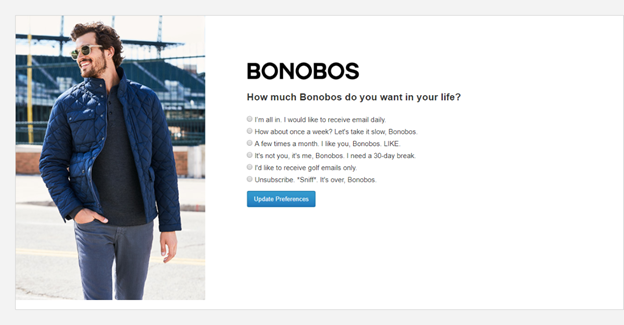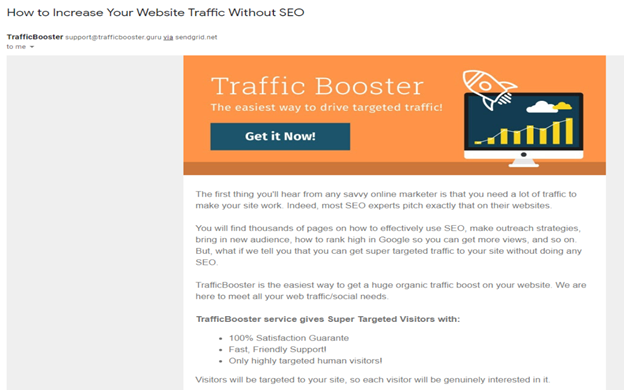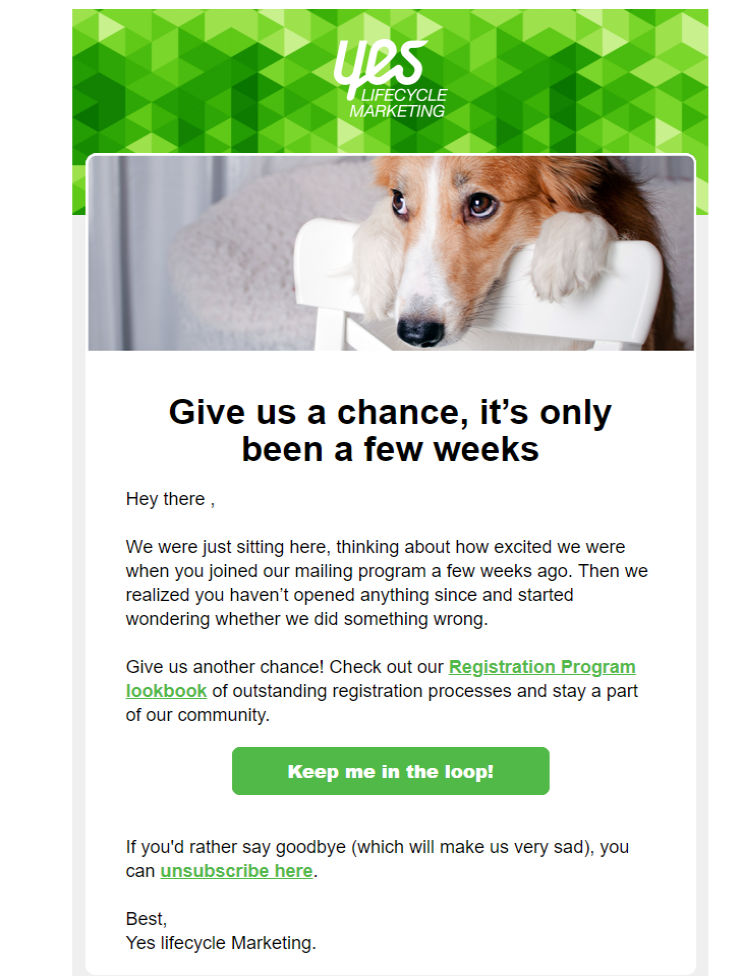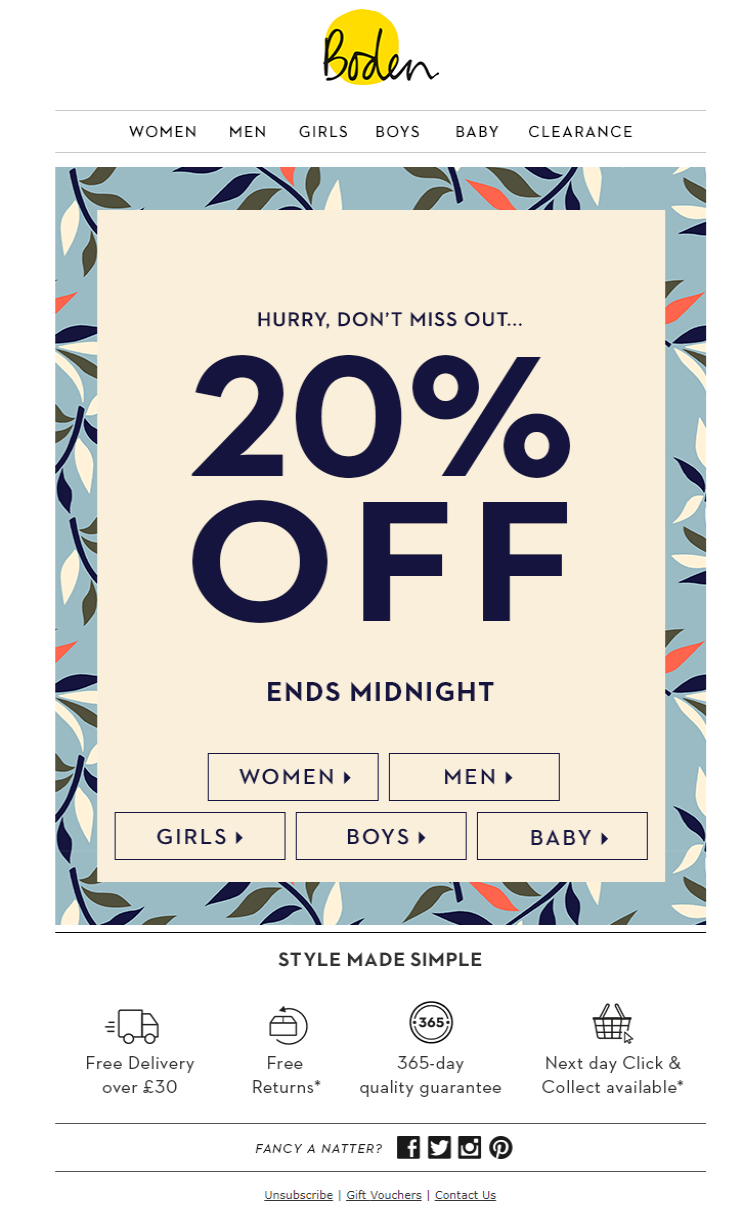Customer retention is the ability of a business to retain its customers. Over time, retention is measured by the percentage of customers a company keeps over its total number of customers within a specific timeframe.
In the video below, you'll get inspired by five customer retention strategies.
Customer retention relates to the number of new customers acquired and the existing customers who leave by not returning to purchase, canceling subscriptions, or closing contracts. That said, by calculating the customer retention rate, companies get to know how loyal their customers are as well as the effectiveness of their customer service. In turn, if there is a need, a business can come up with ways to improve their customer's experience.
Email marketing remains the best way of retaining customers. Eighty percent of businesses say that it is their most significant driver of consumer retention.
Why is it vital to retain your customers?
- Saves marketing costs
- Fosters repeat sales
- Benefits from word-of-mouth advertising
- Allows to get useful feedback
- Earn profit on premium-priced products
Customer retention is essential to a brand for several reasons. Let’s highlight some of them.
Saves marketing costs
Acquiring a new customer costs 5x more than retaining a customer. As such, customer retention saves a company money and reduces its marketing expenditure by keeping existing customers who have already interacted with the company’s products and services. Also, the fact that existing consumers are already familiar with a brand’s services or products, marketers spend way less time when providing customer support.
Fosters repeat sales
Existing customers are more likely to buy new products or services from a company. That said, a customer will buy from a brand in the future only if they trust they will be offered a better shopping experience when compared to competitors.
Benefits from word-of-mouth advertising
Loyal and happy customers give a business the advantage of word-of-mouth promotion at no cost. Existing customers are more likely to tell their family members and friends about an enterprise, its products, and services. And given that customers, especially those who are still prospects, respect the opinion of people who are close to them, they will be convinced to make purchases from a specific business.
Have a look at these statistics: 46 percent of customers in America get brand information from family members, while 45 percent get info on potential purchases from friends. Moreover, 92 percent of customers trust the opinion of friends and family more than other marketing strategies.
That said, the bottom line is that an existing customer is more likely to make referrals. New customers a business gains via word of mouth costs much less to acquire and have a significantly higher lifetime value compared to customers acquired in other ways.
Allows to get useful feedback
Existing customers give valuable feedback, which, if implemented, can enable a business to run more efficiently. By interacting with a business over time, existing customers are in a better place to give feedback about the areas that need to be improved. Repeat customers are easily approachable, and their suggestions for improvement can help at any time. Implementing customer feedback can help a business benefit from new opportunities that lead to increased sales and retention rates.
Earn profit on premium-priced products
Existing customers are less conscious of the prices of products compared to new customers. Loyal customers already value a company and are ready to pay a premium fee to access the services or products offered by the business.
Customer Retention Benefits
- Drives better revenue
- Saves money
- Allows you to get valuable data
- Build strong relationships with customers
- Boosts sales
- Measures your marketing strategy's efficiency
- Provides effective communication
- It’s self-sufficient
- Helps gain new customers
- Allows growth
- Drives better revenue. Retaining existing customers means more profit as buyers already have faith in a brand and are, therefore, more likely to spend more. Using customer loyalty programs to increase retention, boosts returns significantly.
- Saves money. Implementing customer retention strategies costs less than attracting new buyers. It costs 5x more to land a new customer than to nurture an existing one. As such, focusing on retention can help in cutting down marketing costs since existing customers are already familiar with the business.
- Allows you to get valuable data. Existing customers are more likely to participate in surveys and, thus, provide a business with useful data. By acting on this data, a company can offer a more personalized experience to its customers and create effective targeted marketing campaigns.
- Build strong relationships with customers. Implementing customer retention strategies, for example, loyalty programs, makes customers feel appreciated. In turn, they develop emotional connections with a brand and will be patient in case of mishaps. Marketers can increase customer appreciation by offering rewards or points during special occasions, for instance, customer birthdays.
- Boosts sales. By leveraging the data gathered through surveys, marketers can make better suggestions to consumers, which, in turn, increasing the probability of purchases. With time, more sales will be achieved.
- Measures your marketing strategy's efficiency. From analyzing customer retention metrics and reports, businesses can determine the effectiveness of their marketing strategies. Some of the vital retention metrics marketers need to pay attention to include repeat sales, loyalty program engagement, and purchase frequency.
- Provides effective communication. Repeat customers are more comfortable to communicate with, especially during emergencies such as recalls. Businesses can quickly match purchase dates and proceed to send messages to affected customers rather than sending a general email, which most likely, will be ignored. Moreover, it is easier to relay sales, special events, and new product information to existing customers.
- It’s self-sufficient. Once a business sets up a customer retention strategy, little input is required from marketers as the programs are often self-sustaining. The only action a company has to take is to monitor various customer retention metrics. All the while, the retention strategies will be running on the initial settings.
- Helps gain new customers. Loyal, existing customers are the best advocates of a brand. They will share their good experiences with a company, thus reassuring customers with doubts while also introducing the brand to new people.
- Allows growth. Customer retention presents a chance for expansion. For example, if a brand needs a stock of consumer photos when launching a new product, existing customers can come in handy. After all, they are best suited to promote a company’s product because they are already familiar with what the business offers.
How to Calculate the Customer Retention Rate
Customer retention rate (CRR) is given as a percentage. To calculate it, the following information is needed:
- The number of customers at the end of a specific business period (E)
- The number of customers acquired by the business over that duration (N)
- The number of customers at the beginning of that period (S)
When calculating the customer retention rate, the number of new customers acquired is not counted, only the number of existing customers at the end of a specific period. To determine your remaining customers subtract N from the value of E. To get a percentage, divide the result by the number of customers at the beginning, then multiply by 100. Below is the formula:
CRR = ((E-N)/S) *100
Benchmarking and monitoring the CRR enables businesses to improve various aspects to ensure that they retain most of their customers. What is the ideal CRR value? Companies should strive to attain a CRR of at least 85 percent. Nonetheless, this will vary from one business to another; hence, it is important to monitor a company's CRR individually. The point is to keep improving the metric monthly.
Customer Retention Tactics and Strategies
- Share case studies during the sales process
- Set expectations early
- Develop a roadmap for the future
- Create memories around shared successes
- Create customer loyalty programs
- Ask for feedback and act on it accordingly
Here are some excellent strategies for increasing customer retention each business should implement:
Share case studies during the sales process
Companies should provide information from previous case studies to reveal their style of collaborating and communicating with customers. They can go on to disclose the results achieved. With this information, new customers will set their expectations and be more welcoming of the experience they get while interacting with the company.
Set expectations early
Companies should communicate the progress towards goals, deadlines, project inclusions, processes, and so forth to keep their customers informed of what is happening. Doing this will ensure that the customers are happy and, thus, ready for continued interaction with the business.
Develop a roadmap for the future
Marketers should create and revise company-customer relationship roadmaps regularly to enable buyers to plan effectively. Doing this will keep the customers informed of the current and future stages of the relationship.
Create memories around shared successes
Companies can boost customer retention by creating memorable events around their successes. Implementing this approach will also keep customers from dwelling on negative experiences, for example, missed deadlines, wrong deliveries, etc.
Create customer loyalty programs
Loyalty programs motivate clients to choose your brand. Offer them to collect the bonuses after each purchase, and when they reach a particular amount of money, customers can use them to get a generous discount.
Ask for feedback and act on it accordingly
Ask your clients to estimate both the service and the products after every purchase. Let them not only provide you with points but allow them to leave a comment. This way, you can use it to improve the service.
How to Increase Customer Retention with Email Marketing
- Give customers more control
- Write valuable messages and exciting stories
- Utilize re-engagement email campaigns
- Segment and personalize
- Give discounts
- Run holiday marketing
Brands can boost customer retention with email marketing. It is straightforward when one uses a professional email marketing platform. Email marketing provides a bunch of advanced features and instruments that significantly contribute to customer retention.
Give customers more control
Allow users to determine their email preferences while subscribing or right after it. Let them set the types and frequency of the emails you will send them. This way, you won’t bombard your audience with bulk emails that don't interest them. This approach is the beginning of your mailing list segmentation.
Look how Bonobos put that into practice.

Write valuable messages and exciting stories
Providing something useful to subscribers is excellent for lead nurturing. Blog posts, interviews, and case studies can give customers more reasons to trust you.

Utilize re-engagement email campaigns
Businesses and their customers often grow apart after a while. Work, family, or changes in interests are just a few reasons responsible for this trend. To keep customers involved, businesses should send re-engagement emails. Updates and offerings, as well as benefits, are some of the things a company can include in these emails.

Segment and personalize
Generic marketing emails will not cut the mustard as far as customer retention goes. Customers prefer customized messages. How can you achieve personalized and targeted email campaigns? With the help of an email marketing service. Email Marketing services offer tools for mailing list segmentation based on gender, location, products purchased, and so forth.
SendPulse has smart segmentation features available for any business.
At the end of the email, Mackage gives options to choose clothes for men, women, kids, or go to the bags section. This way, the brand collects the information for further personalization.

Give discounts
They encourage customers to keep coming back to a brand. By offering a discount for the next purchase, you make a small investment for fostering customer loyalty and boosting customer retention.
Boden tempts subscribers with a time-limited discount.

Run holiday marketing
Holidays give additional opportunities to increase customer retention. Congratulate your subscribers on their birthday and holidays, provide exclusive offers. This way, customers will feel that you care.
Check out how Petco increases customer retention on National Pet Day. They offer 15% off orders of $75 and provide free shipping.
To conclude, email marketing is sure to help a business improve its relationships with customers and retain them. Companies can easily send personalized messages, valuable content, and discounts to customers using an email marketing platform.
References
- This article develops an in-depth look at customer retention. Here you'll get to know why it is essential to build, how to calculate it, familiarize themselves with strategies and techniques that help increase retention.
- The article provides the ultimate guide to customer retention.
- Draw inspiration from 14 examples of customer retention strategies that work.
- Here you'll find five strategies that help retain more customers.
Last Updated: 23.08.2023


or